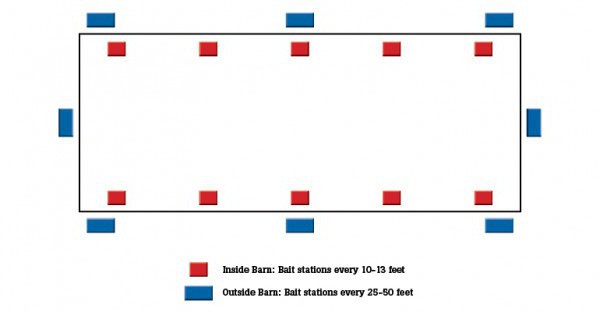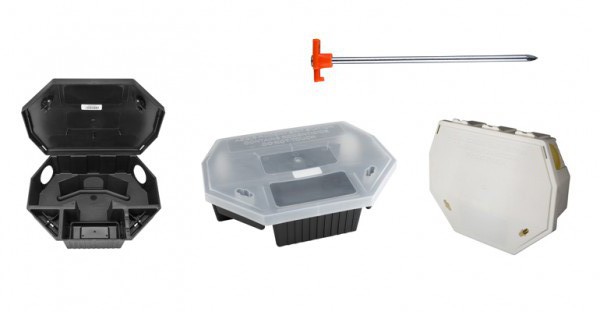The use of bait stations improves the effectiveness of any rodent control program. Stations protect baits from rain and dirt, helping the rodenticides stay fresh and potent longer while providing security against access from children and pets. Bait stations also provide an environment where rats and mice feel secure when feeding on baits.

Rodents are creatures of habit and travel along established paths between their nests and food supply. They will not go out of their way to visit bait stations outside their normal traffic areas. Look for signs of rodent activity such as droppings, tracks and gnawing to locate pathways. Place mouse stations 10-13 feet apart as mice seldom venture more than 50 feet from their nests. Rats range much farther afield allowing station placement to be between 25 and 50 feet apart.

Do not use mouse stations when rats are present as the bigger rodents will gnaw through the thinner plastic and expose the baits. Consider using white colored bait stations for those locations on the south exposure of buildings. The interior temperature of black colored stations can increase by as much as 30° which may melt some bait formulations.

Securely fasten stations to walls or floors to prevent them from being moved out of the traffic pathway. Use tent stakes to anchor bait stations to the ground for exterior placement. T-style stations are very versatile in their applications. Nylon ties are used to fasten them to gate rails, rafters, and even feed pipes.
Check bait stations on a monthly basis as part of the routine barn maintenance program adding fresh bait as needed. Rodents will often refuse to eat spoiled or stale bait. Observe the condition of the stations themselves as plastic can become brittle, especially the lid hinge. Stations with rotating hinges will outlast models with thin bendable strips of plastic called living hinges. During periods of heavy infestation, it may be necessary to check daily to ensure an adequate supply of bait. Stations are available with clear lids to allow a visual check of bait levels without opening the lid.
It is important to be patient when dealing with rat infestations. Rats are suspicious of new objects in their territory, and it may be several weeks before they use a new bait station. Leave stations in place even after a heavy infestation is under control. Rats are more likely to enter bait stations that have become part of the "terrain" when baiting occurs in following seasons.
Go to bait stations for pricing and ordering information.













 Україна
Україна Méjico
Méjico


